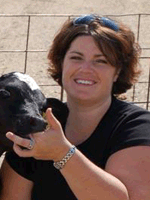
Boosting Baby Calf Care in the Winter
 By Ann Hoskins, Vita Plus calf products coordinator
By Ann Hoskins, Vita Plus calf products coordinatorLast winter taught us many things and hopefully some of those lessons will make us better calf raisers.
What can you do to protect those newborn calves?
- Quickly drying the newborn calf is so important. Remove the calf from the maternity area in a clean cart or sled. Place the calf in a dry, clean area. Take a clean bath towel and dry the calf, starting with the head and chest. Continue to dry the calf until the hair is fluffy.Even if it’s not brutally cold, the calf is still chilled easily. Think of it like climbing out of a swimming pool with a slight breeze. You get goose bumps. To beat the chill, the calf must use valuable energy to maintain body temperature.
Drying the calf also stimulates the newborn animal. Think of yourself as the surrogate mom. When a calf is born, the cow gets up and vigorously licks the calf. This stimulation increases heart rate and blood flow and helps the calf get moving. This calf will likely get up sooner and will suckle a bottle more quickly.
- Having a clean, dry, draft-free environment for these calves is invaluable. Even in the summer, it is good for newborns to nest for the first 24 hours. Some producers use supplemental heat, such as heat lamps, overnight. It gives that calf a chance to stabilize before heading to the long-term housing. However, areas with heat lamps must remain clean to control the fly populations. It is not good for the newborn calf to be covered in flies and constantly twitching. Once again, that uses energy the calf needs to survive and grow.
- As always, feed high-quality, clean colostrum to calves. Remember, bacteria grow well in moist, warm areas. If you are not feeding colostrum right away, put it in the refrigerator or freezer to slow bacteria growth. In some cases, if that cannot be controlled, consider pasteurizing your colostrum or using a colostrum replacer, such as Secure.Continue to monitor feeding temperatures. Colostrum should be fed to calves at body temperature of 101 degrees F. Talk to your Vita Plus consultant if you need a thermometer to check colostrum and feeding temperatures.
- For the long-term, think about how many newborn calves you average and how much space you will need to take care of them in the bitter cold. It is much easier to build, renovate or locate materials now instead of the middle of a winter storm. Some farms have built individuals pens with heat lamps or infrared heating. Others have constructed heated rooms or areas to place calves for 24 hours.The keys to success in these areas are to clean between calves and have enough space for the highest calving days. Follow strict cleaning protocols when using these areas as they become damp and are always warm. If you need suggestions or would like to see examples, check with your Vita Plus consultant for guidance.
Newborn calves need special attention regardless of the outside temperature. That said, with a bit more love in the winter, you’ll see a huge pay back in performance.
| Category: |
Facility design Starting Strong - Calf Care Winter calf care |

